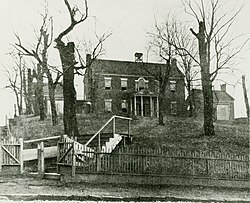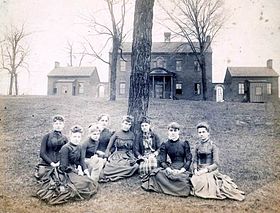
Knoxville College is a historically black liberal arts college in Knoxville, Tennessee, United States, which was founded in 1875 by the United Presbyterian Church of North America. It is a United Negro College Fund member school.

The University of Tennessee System is a system of public universities in the U.S. state of Tennessee. It is one of two public university systems, the other being the Tennessee Board of Regents (TBR). It consists of four primary campuses in Knoxville, Chattanooga, Pulaski and Martin; a health sciences campus in Memphis; a research institute in Tullahoma; and various extensions throughout the state.
John Hervey Crozier was an American attorney and politician active primarily in Knoxville, Tennessee, USA, during the mid-nineteenth century. Described as "an orator of uncommon brilliancy" and "one of the brainiest men ever sent by Tennessee to congress," Crozier represented Tennessee's 3rd congressional district in the United States House of Representatives from 1845 to 1849. While originally a member of the Whig Party, Crozier switched his allegiance to the Democratic Party in the 1850s, and supported the Confederacy during the Civil War. Crozier retired from public life after the war, and spent his remaining years engaged in scholarly pursuits.

The James Park House is a historic house located at 422 West Cumberland Avenue in Knoxville, Tennessee, United States. The house's foundation was built by Governor John Sevier in the 1790s, and the house itself was built by Knoxville merchant and mayor, James Park (1770–1853), in 1812, making it the second-oldest building in Downtown Knoxville after Blount Mansion. The house is listed on the National Register of Historic Places, and currently serves as the headquarters for the Gulf and Ohio Railways.

The National Conservation Exposition was an exposition held in Knoxville, Tennessee, United States, between September 1, 1913, and November 1, 1913. The exposition celebrated the cause of bringing national attention to conservation activities, especially in the Southeastern United States. The fair was held in what is now Knoxville's Chilhowee Park in East Knoxville.
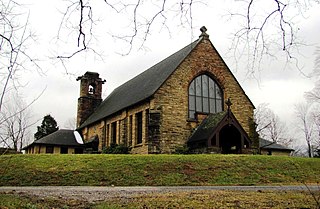
The Alpine Institute was a Presbyterian mission school located in Overton County, Tennessee, United States. Operating in one form or another from 1821 until 1947, the school provided badly needed educational services to children living in the remote hill country of the Upper Cumberland region. In 2002, several of the school's surviving structures were added to the National Register of Historic Places as a historic district.
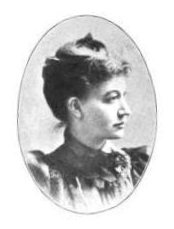
Margaret Elizabeth Crozier French was an American educator, women's suffragist and social reform activist. She was one of the primary leaders in the push for women's rights in Tennessee in the early 1900s, and helped the state become the 36th state to certify the 19th Amendment to the United States Constitution, giving women the right to vote, in 1920. She also founded the Ossoli Circle, the oldest federated women's club in the South, and led efforts to bring coeducation to the University of Tennessee.

Charles McClung McGhee was an American industrialist and financier, active primarily in Knoxville, Tennessee. As director of the East Tennessee, Virginia and Georgia Railway (ETV&G), McGhee was responsible for much of the railroad construction that took place in East Tennessee in the 1870s and 1880s. His position with the railroad also gave him access to northern capital markets, which he used to help finance dozens of companies in and around Knoxville. In 1885, he established the Lawson McGhee Library, which was the basis of Knox County's public library system.

Enoch Lloyd Branson (1853–1925) was an American artist best known for his portraits of Southern politicians and depictions of early East Tennessee history. One of the most influential figures in Knoxville's early art circles, Branson received training at the National Academy of Design in the 1870s and subsequently toured the great art centers of Europe. After returning to Knoxville, he operated a portrait shop with photographer Frank McCrary. He was a mentor to fellow Knoxville artist Catherine Wiley, and is credited with discovering twentieth-century modernist Beauford Delaney.

Charles McClung was an American pioneer, politician, and surveyor best known for drawing up the original plat of Knoxville, Tennessee, in 1791. While Knoxville has since expanded to many times its original size, the city's downtown area still roughly follows McClung's 1791 grid. McClung also helped draft Tennessee's constitution in 1796, surveyed and planned what is now Kingston Pike in 1792, and served as Knox County's first court clerk. His home, Statesview, still stands in West Knoxville and has been listed on the National Register of Historic Places.
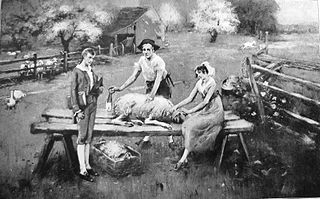
Samuel Czar Carrick was an American Presbyterian minister who was the first president of Blount College, the educational institution to which the University of Tennessee traces its origin.

The University of Tennessee, Knoxville is a public land-grant research university in Knoxville, Tennessee. Founded in 1794, two years before Tennessee became the 16th state, it is the flagship campus of the University of Tennessee system, with ten undergraduate colleges and eleven graduate colleges. It hosts more than 30,000 students from all 50 states and more than 100 foreign countries. It is classified among "R1: Doctoral Universities – Very high research activity".

Thomas William Humes was an American clergyman and educator, active in Knoxville, Tennessee, during the latter half of the 19th century. Elected rector of St. John's Episcopal Church in 1846, Humes led the church until the outbreak of the Civil War, when he was forced to resign due to his Union sentiments. He was named president of East Tennessee University in 1865, and during his tenure, he led the school's expansion and transition into the University of Tennessee. Humes later served as the first librarian of the Lawson McGhee Library, and published a book about East Tennessee's Unionists entitled, The Loyal Mountaineers of Tennessee.
Boscobel College for Young Ladies was a college in Nashville, founded in 1889 as the Nashville Baptist Female College by the Tennessee Baptist Convention. The college operated for twenty-five years — until 1916. One of its founding objectives was to provide the lowest possible cost for higher-education of young women.

The Baumann family was a family of American architects who practiced in Knoxville, Tennessee, and the surrounding region, in the late 19th and early 20th centuries. It included Joseph F. Baumann (1844–1920), his brother, Albert B. Baumann, Sr. (1861–1942), and Albert's son, Albert B. Baumann, Jr. (1897–1952). Buildings designed by the Baumanns include the Mall Building (1875), the Church of the Immaculate Conception (1886), Minvilla (1913), the Andrew Johnson Building (1930), and the Knoxville Post Office (1934).

The History of Knoxville, Tennessee, began with the establishment of James White's Fort on the Trans-Appalachian frontier in 1786. The fort was chosen as the capital of the Southwest Territory in 1790, and the city, named for Secretary of War Henry Knox, was platted the following year. Knoxville became the first capital of the State of Tennessee in 1796, and grew steadily during the early 19th century as a way station for westward-bound migrants and as a commercial center for nearby mountain communities. The arrival of the railroad in the 1850s led to a boom in the city's population and commercial activity.

Mary Boyce Temple was an American philanthropist and socialite, active primarily in Knoxville, Tennessee, in the late 19th and early 20th centuries. She was the first president of the Ossoli Circle, the oldest federated women's club in the South, and published a biography of the club's namesake, Margaret Fuller Ossoli, in 1886. She also cofounded the Tennessee Woman's Press and Author's Club, the Knoxville Writer's Club, and the Knox County chapter of the League of Women Voters. She represented Tennessee at various international events, including the Paris Exposition of 1900 and at the dedication of the Panama Canal in 1903.

The Ossoli Circle is a women's club located in Knoxville, Tennessee, United States. Founded in 1885 as a literary society, the club is a charter member of the General Federation of Women's Clubs, and the first federated women's club in the South. Ossoli has long played an active role in obtaining economic and educational opportunities for women in Tennessee, and its members campaigned for the passage of the 19th Amendment in the early 1900s. The club currently sponsors over two dozen projects and organizations.
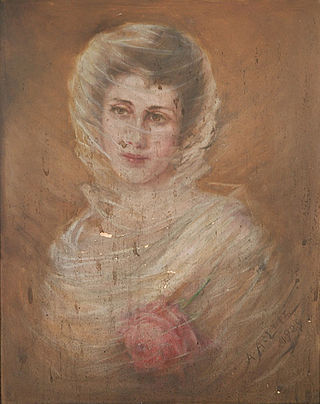
Adelia Armstrong Lutz was an American artist active in the late nineteenth and early twentieth centuries. She organized art circles in Knoxville, Tennessee, as director of the Knoxville Art Club and as a co-organizer of the Nicholson Art League. Her still lifes and portraits were exhibited throughout the American South, and they are to be the subject of a permanent exhibit at her former home, Historic Westwood.
Bolivar College was a private preparatory school and college in Madisonville, Tennessee. It was established by Rev. Creed Fulton, a founder of Emory and Henry College in Virginia. It opened in 1825 as the Bolivar Acadmy and became a college in the 1890s. It closed in December 1907.
